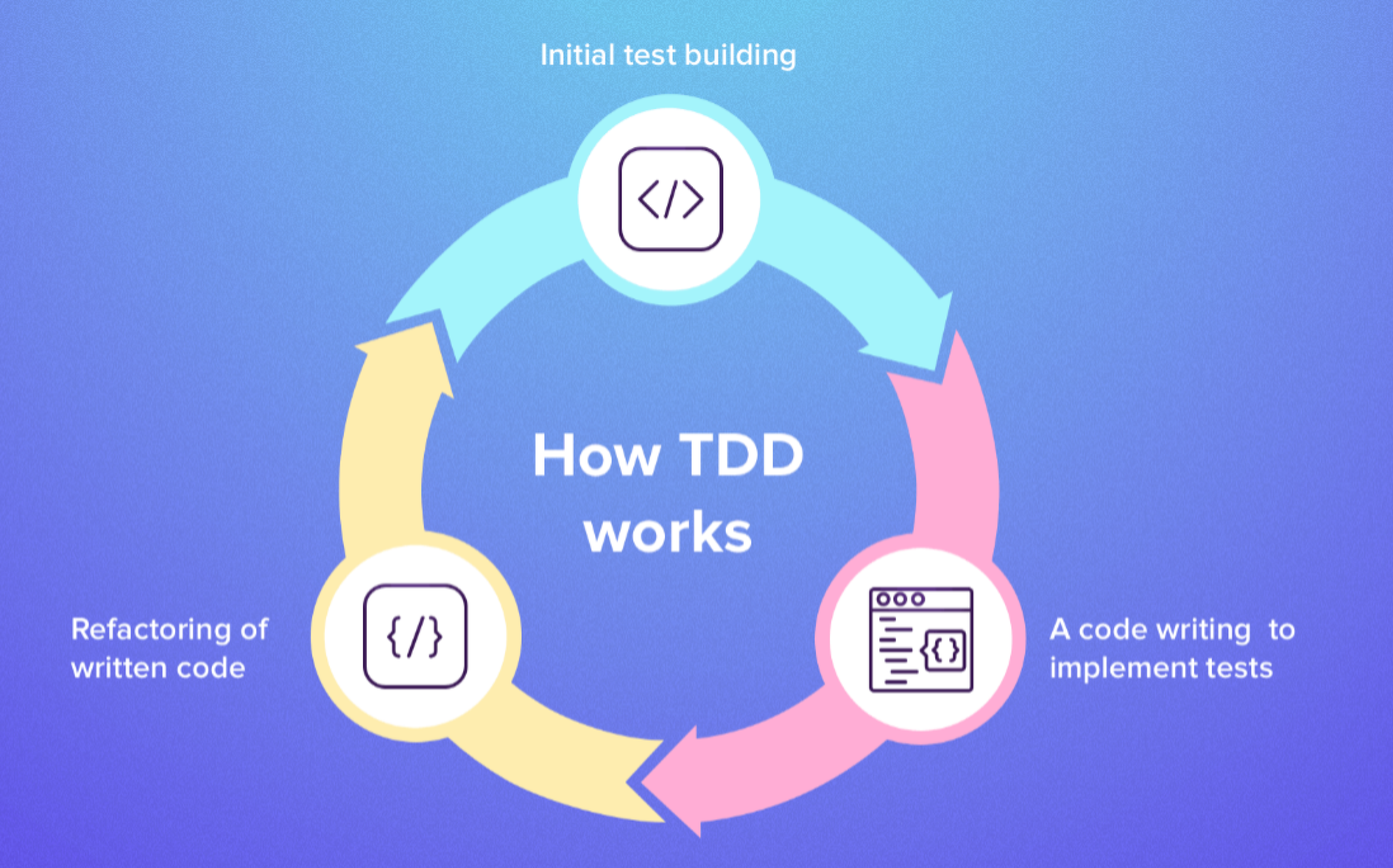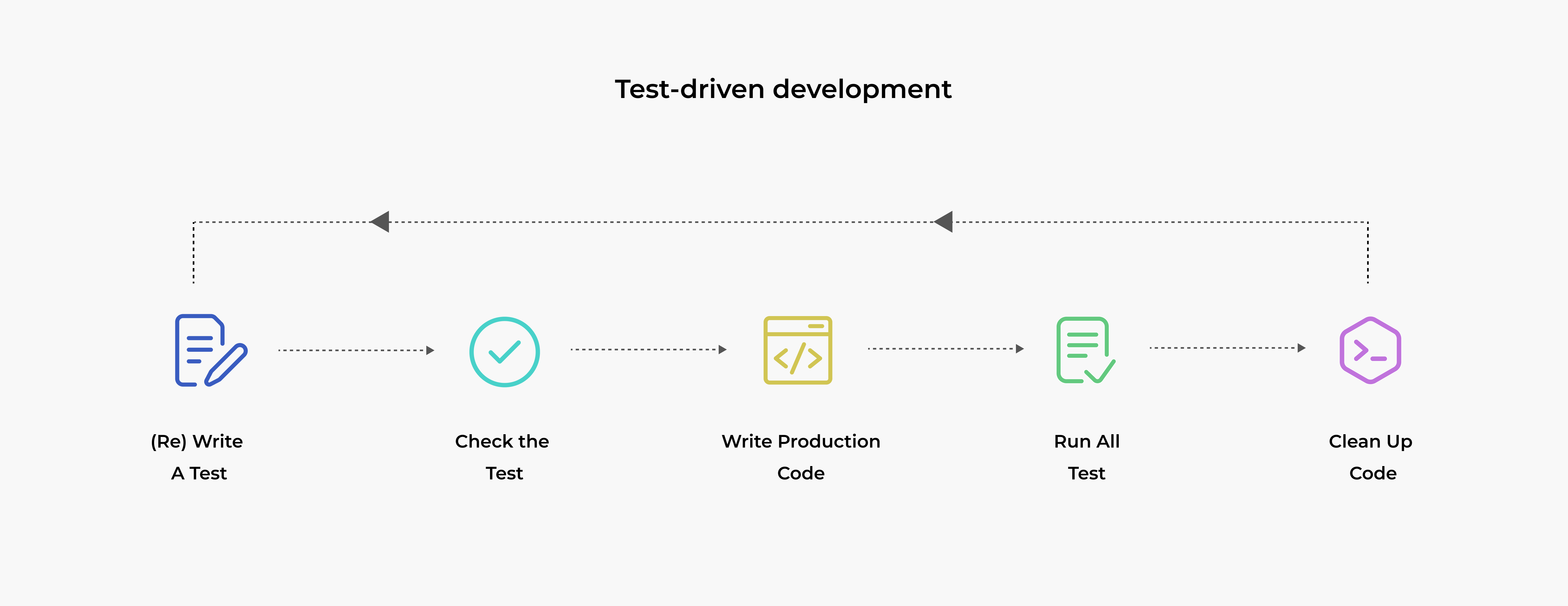In today’s business landscape, organizations of all sizes share a common objective: to develop high-quality products that yield tangible business results. Software development approaches have undergone significant transformations, with agile methodologies being widely adopted. The emphasis lies in continuous evolution, improved quality, and faster market delivery.
In the past, as companies focused on meeting tight deadlines and prioritized speed, product testing was often neglected. Consequently, developers spent an average of 75% of their time on debugging tasks.
With Test-driven development, quality becomes fundamental. The code and tests are built together, focusing on one use case at a time. It improves code quality and sets up a strong foundation for quality deliverables while supporting continuous delivery. Your products become foolproof leaving no scope for any bugs or errors. Let’s take a deep dive and understand everything about Test-driven development.
What is test-driven development?
Continue Reading

Test-driven development (TDD) is a software development practice where developers begin by writing a test case that initially fails. Subsequently, they write code with the necessary business logic to pass the failing test. This process may involve refactoring the code to align with the business logic or creating additional tests. Notably, in TDD, automated unit tests are written prior to the actual implementation of the code.
Why should you use Test driven development?

TDD is a balanced approach for developing software at scale and still retaining high quality in all the deliverables. With this process, you don’t jump into the validation first but focus more on correcting the specifications. You get confirmation of whether the code behaves the way it should or not during the initial phases itself. In other words, the requirements are streamlined before writing the functional codes. This results in better code quality and effective unit testing while increasing the initial development time.
Top 10 advantages of test-driven development
You can develop high quality applications in less time and cut huge costs in debugging.
1. Modular and robust programming code:
When programmers write small unit tests, focusing on one use case at a time, it streamlines the process of creating additional test code efficiently. The modular nature of the code facilitates easier testing and contributes to a well-structured solution. This approach leads to faster innovation and continuous delivery, enhancing the overall robustness and quality of the software.
2. Easy refactoring and code maintenance:
If the developers want to rearrange or refactor the code, this process helps in increasing the transparency of the integration process. Code refactoring is easy in this practice as the modular tests are written before the actual code. This makes your code flexible, extensible and can be moved or refactored with minimal risk of code-breaking.
3. Requirement clarification and accuracy:
By starting with unit tests and coding to achieve specific business logic, you gain a clearer understanding of the requirements and ensure accuracy from the outset. This approach allows you to acquire detailed specifications early in the development process. In case of any issues or changing requirements, you can quickly rework the code without any complications. The iterative nature of test-driven development enables you to continuously improve code quality and adapt to changes seamlessly.
4. Documenting the code better:
Modular and simple unit tests effectively eliminate the need for laborious documentation tasks that often become cumbersome over time. These tests serve as living documentation of the functionality and provide clear illustrations of how the codes are intended to function. They are easier to follow, simpler, smaller, well-structured, and easier to maintain.
5. Improved code quality:
During the code development process, unit tests play a critical role in detecting errors and bugs, enabling developers to enhance code quality. Automated tests in TDD act as a safety net, swiftly identifying mistakes. With a shorter feedback loop and change detectors, developers can easily rework and elevate the code quality, resulting in the delivery of a high-quality product or solution.
6. Minimal debugging for the developers:
With the TDD approach, it’s easier to find the bugs and resolve them quickly. Since testing is done right from the initial stages, failure will be detected in the early stages of the development. Whenever something breaks, the developer is notified. Hence, minimal time is spent on debugging and fixing the errors. This approach provides higher overall test coverage and ensures a quality final product.
7. Low development costs:
In the traditional approach, a significant budget was allocated for post-development testing, which often incurred substantial efforts, time, and expenses to fix issues. However, with TDD, testing starts right from the beginning, minimizing the scope for debugging or errors. As a result, the solution or build becomes less prone to bugs, leading to significant cost savings and improved overall efficiency.
8. Increase the ROI
By adopting the test-driven development approach, you can significantly reduce maintenance costs and bug fixes. This methodology enables faster development of solutions and products, leading to reduced time-to-market, lower failure risks, and increased overall quality. As a result, your return on investment (ROI) can multiply manifold, delivering greater value to your business.
9. Increase the developer’s productivity:
When unit tests are done frequently and the bugs are resolved instantly, there’s a vast space for building quickly and trying out new things. The TDD approach increases the productivity of the developers by giving them enough time to focus on the solution than on testing.
10. Productive team collaboration and enhanced satisfaction:
One of the important aspects of developing software is that the team should be more constructive rather than destructive. Each member contributes in their own way and the TDD approach enables the entire team’s involvement throughout the project. This enhances the developer’s satisfaction as they proceed towards the final stages of the development.
TDD – the best recipe for better code quality and most suitable for app modernization
Organizations embracing the test-driven development (TDD) approach have reaped significant benefits. This methodology allows for seamless updates to solutions or products with a clean interface, promoting flexibility and modularity. By prioritizing the test code on par with the production code, TDD ensures the creation of high-quality software and solutions. Moreover, TDD proves to be the ideal approach for application modernization, assuring smooth migration to the cloud without compromising code quality.
However, we know that every business is unique, and a one-size-fits-all approach is not viable. That’s why our team of product experts is here to assist you and guide you in choosing the optimal method that aligns perfectly with your specific development requirements.